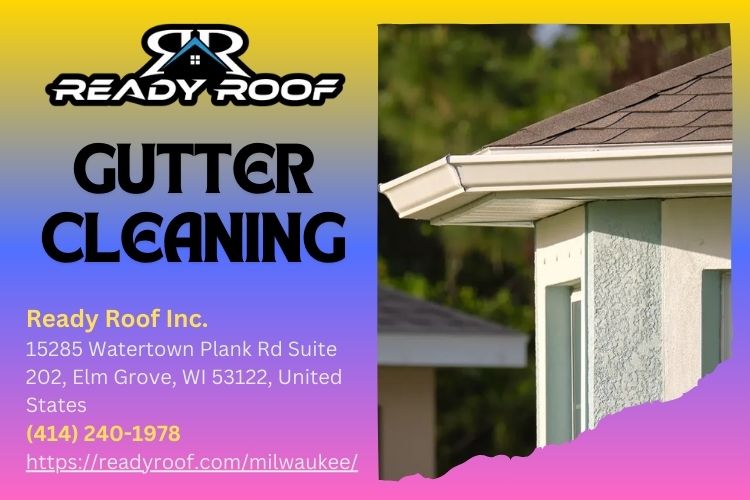In the world of roofing, one can hardly underestimate the impact that weather has on the integrity and longevity of roofs. As a homeowner, it’s essential to understand this relationship as it can save you significant time and money in repairs down the line. In this comprehensive guide, we’ll delve into how various weather conditions affect your roof and provide invaluable tips from Ready Roof Inc., a reputable roofing contractor company based in Elm Grove, WI.
Understanding the Basics: How Weather Affects Your Roof
The Role of Temperature Fluctuations
Temperature changes can take a toll on roofing materials. Extreme heat can cause shingles to crack or warp, while freezing temperatures might lead to brittleness in materials like asphalt shingles.
- Heat Effects: When temperatures soar, roofs absorb heat, which can accelerate wear. Cold Consequences: Freezing temperatures can cause expansion and contraction cycles that compromise structural integrity.
Rainfall and Its Impact on Roofing
Heavy rainfall can lead to water pooling and increased moisture retention on your roof. Prolonged exposure can weaken materials, leading to leaks or even mold growth.
- Drainage Systems: Proper gutters and downspouts are crucial for directing water away from your roof. Mold Growth: Standing water encourages mold, which can deteriorate roofing materials over time.
Wind Damage: A Silent Threat
Strong winds can lift shingles off your roof or cause them to curl at the edges. This is particularly true for older roofs or those with pre-existing damage.
- Wind Resistance: Newer materials often come with higher wind resistance ratings. Debris Impact: Wind can also carry debris that may scratch or damage your roof surface.
Types of Weather Conditions That Affect Your Roof
Snow Accumulation: The Weight Factor
Snow accumulation adds significant weight to a roof structure. Understanding snow load limits is vital for maintaining safety during winter months.
- Weight Consideration: Too much snow can lead to structural failure. Preventive Measures: Regularly removing snow buildup will help mitigate risks.
Hail: Nature's Little Projectiles
Hailstorms are notorious for damaging roofs quickly. The size and speed of hailstones determine the extent of potential damage.
- Material Vulnerability: Asphalt shingles are more susceptible than metal roofing. Insurance Claims: Documenting damage immediately after a storm is crucial for insurance purposes.
Sun Exposure: The Ultraviolet Effect
Prolonged sun exposure leads to UV degradation, causing colors to fade and causing asphalt shingles to become brittle over time.
- Protective Coatings: Consider using reflective coatings that protect against UV rays. Regular Inspections: Keeping an eye out for signs of fading or brittleness is key.
Signs That Weather Is Taking Its Toll on Your Roof
Identifying Leaks Early On
Leaks are often the first sign that something's amiss with your roof. Look for water stains on ceilings or walls.
- Ceiling Inspection: Check for discoloration; it's often indicative of moisture issues. Attic Checks: Inspect your attic after heavy rains for any signs of dampness or leaks.
Missing Shingles: A Red Flag
If you notice missing shingles after a storm, it’s imperative to address this immediately to prevent further damage.
- Immediate Replacement Needs: Act quickly before rain enters through exposed areas.
Curled Edges and Cracks
Curled or cracked shingles indicate aging materials that may soon fail under stress.
- Replacement Timeline: Regular maintenance checks will help track when replacements are needed.
Seasonal Weather Considerations for Roofing Maintenance
Spring: An Ideal Time for Inspections
Spring offers an excellent opportunity to inspect your roof after harsh winter weather.
Checklist for Spring Maintenance
Inspect gutters for blockages Check flashings around chimneys Look for signs of ice dammingSummer Preparations Against Heat Damage
As summer approaches, consider preventive measures against extreme heat conditions affecting your roof.
Summer Maintenance Tips
Apply reflective coatings Ensure proper ventilation in attics Schedule regular inspectionsFall Preparations Before Winter Hits
Before winter arrives, ensure your roof is prepared to withstand snow loads effectively:
Fall Maintenance Checklist
Clean gutters thoroughly Inspect insulation in attics Repair any existing issues before snowfallChoosing the Right Materials Based on Weather Conditions
Asphalt Shingles vs Metal Roofing: Pros and Cons
There's no one-size-fits-all solution when it comes to roofing; different materials perform better under varying weather conditions:
Asphalt Shingles
Pros:
- Cost-effective Easy installation
Cons:
- Less durable against extreme weather
Metal Roofing
Pros:
- Excellent durability Better resistance against wind and hail
Cons:
- Higher upfront cost
DIY vs Professional Help from Roofing Contractors near Me
While some homeowners might be tempted to tackle repairs themselves, hiring professionals ensures quality work:
Why Choose Local Roofing Contractor Company?
Knowledge about local weather patterns Familiarity with necessary building codes Access to quality materialsMaintenance Tips from Ready Roof Inc.: Protecting Your Investment
Investing in routine maintenance pays dividends long-term:
Regular Inspections Are Key
Schedule at least two inspections yearly—once in spring and once in fall—to catch potential issues early on:
What Inspectors Look For
Signs of wear Structural integrity Potential leak pointsGutter Maintenance Matters
https://www.readyroof.com/milwaukee/ Affordable roofing contractor near meClogged gutters lead to water pooling on rooftops; ensure they’re cleaned regularly:
Gutter Cleaning Checklist
Remove debris Ensure downspouts are clear Check for rust or corrosionHow Weather Affects Your Roof: Tips from Ready Roof Inc.: FAQs Section
Here are some frequently asked questions about how weather affects roofing:

Q1: What should I do if I notice a leak?
If you notice a leak, contact a professional roofing contractor immediately—delaying action could lead to more extensive damage!
Q2: How often should I clean my gutters?
Ideal cleaning frequency depends on leaf coverage but generally twice a year is sufficient—spring and fall align well with seasonal changes!
Q3: Do I need special materials if I live in an area prone to hailstorms?
Absolutely! Opting for impact-resistant shingles or metal roofing will offer better protection against hail damage!
Q4: Can I perform my own roof inspections?
While DIY inspections are possible, hiring professionals ensures thorough checks—many hidden issues may not be noticeable without experience!
Q5: What’s the lifespan of different roofing materials?
Generally:
- Asphalt shingles last around 20 years Metal roofs last between 40–70 years depending on care!
Q6: How does snow affect my roof’s lifespan?
Excessive snow accumulation puts pressure on structures—if too heavy it can lead directly towards sagging which reduces overall lifespan!
Conclusion: Protecting Your Home Starts with Awareness
Understanding how weather affects your roof is crucial in ensuring its longevity and effectiveness as a protective barrier over your home! At Ready Roof Inc., we emphasize preventative measures alongside timely repairs! If you're looking for reliable roofing contractors near me who understand local climate challenges inside out—look no further than our dedicated team! Don't hesitate—reach out today!
Contact Us
Ready Roof Inc.
Address: 15285 Watertown Plank Rd Suite 202, Elm Grove, WI 53122, United States

Phone: (414) 240-1978
In summary, protecting your investment involves understanding environmental impacts while maintaining awareness about necessary upkeep tasks! Reach out today if you have any questions regarding how we assist clients like yourself amid ever-changing climate conditions!